Athens to Delphi day trip: the Ultimate 2024 Itinerary
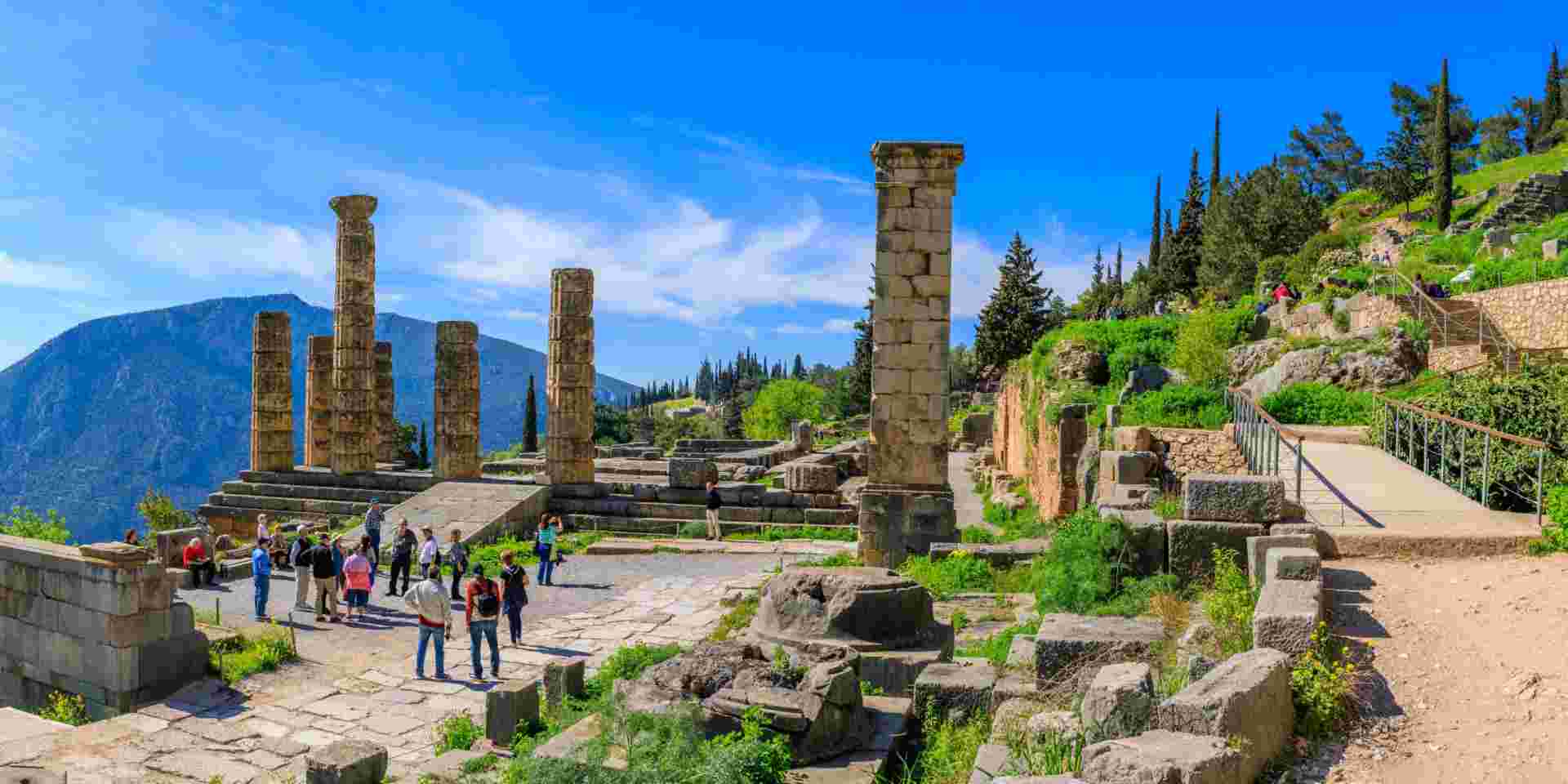
Embark on an Athens to Delphi day trip and dive into the rich history of Ancient Greece as you explore the mystical Oracle of Delphi. Unravel the mysteries of this UNESCO World Heritage Site. Discover the Sanctuary of Apollo and the sacred sites that were once frequented by the illustrious Pythia. Get ready for an ultimate Athens to Delphi day trip itinerary where you will experience the magic of Delphi for yourself.
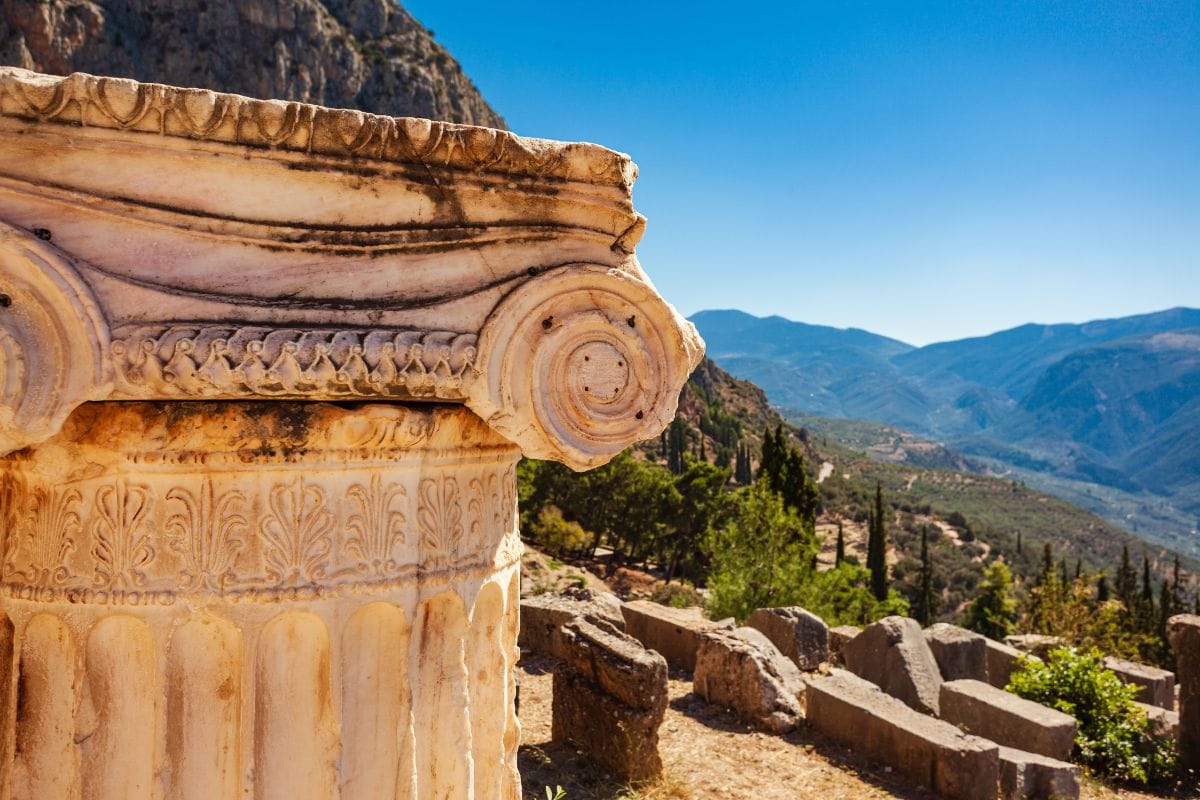
Discovering Delphi: A Historical Overview
Delphi, an ancient Greek sanctuary with the famous Oracle, holds immense historical significance. In ancient times, it was a central hub where the Oracle of Delphi, a high priestess, delivered prophecies. The sanctuary of Apollo and the Pythian Games also played an integral role in Delphi’s importance in Greek history and are considered one of the most important archaeological sites in the world
The Significance of the Oracle of Delphi in Ancient Greece
The Oracle of Delphi held immense significance in ancient Greece, serving as a revered sanctuary where individuals sought guidance from the Pythia, the high priestess believed to channel the wisdom of Apollo. People from far and wide journeyed to Delphi to consult the oracle, seeking advice on significant matters ranging from personal decisions to state affairs. This sacred site played a crucial role in shaping the beliefs, decisions, and outcomes of the ancient world, solidifying its reputation as a place of divine communication and influence.
Delphi’s Role in Mythology and History
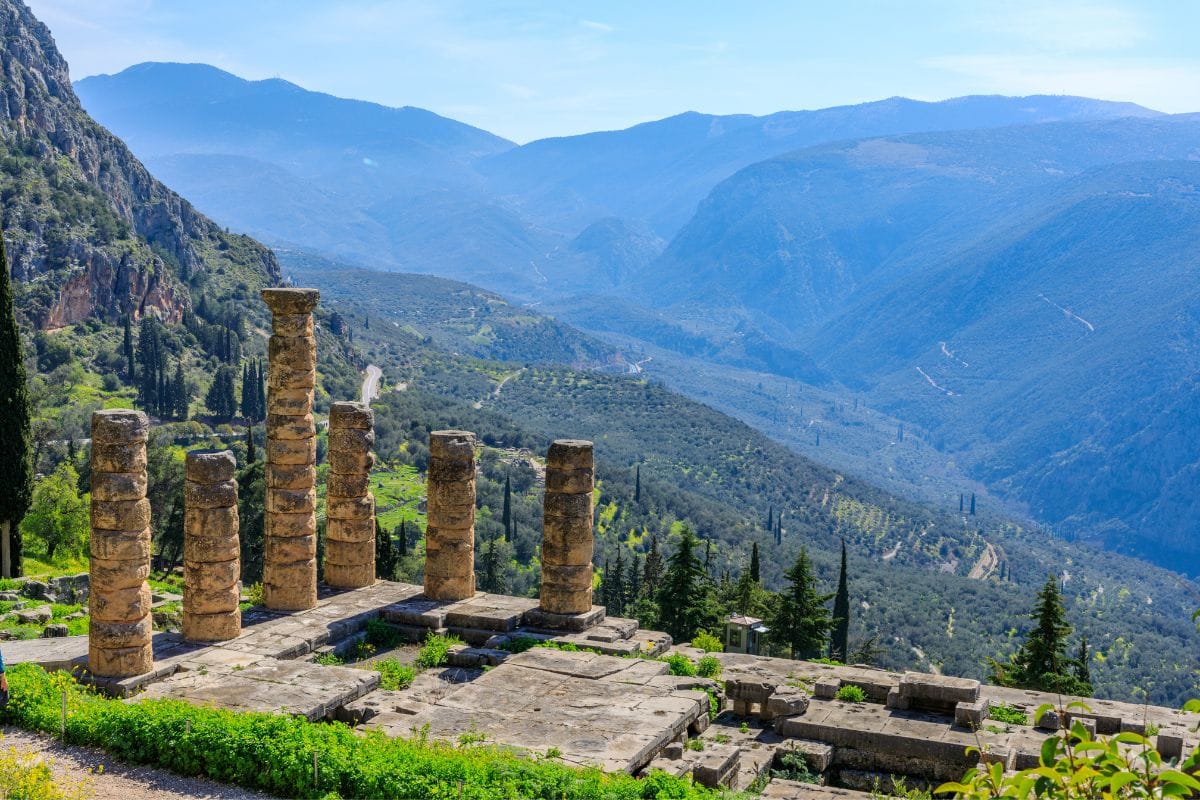
Planning your Athens to Delphi day trip
Embark on your Athens to Delphi day trip with careful planning. The winter season offers a less crowded experience, ideal for exploring the ancient ruins comfortably. Choosing a private driver can provide flexibility and free time to wander. Ensure you have comfortable shoes for walking through the archaeological site of Delphi and its museum.
Best Time of Year to Visit Delphi
The best time to visit Delphi is during the spring and fall when the weather is mild, and the crowds are fewer, allowing for a more serene experience. Summer can be crowded and hot, while winter may bring colder temperatures and the possibility of closures. Aim for April-May or September-October for a comfortable exploration of the archaeological site and its surroundings.
Where is Delphi?
Delphi is located in central Greece on the southwestern spur of Mount Parnassus. It was considered the center of the world by ancient Greeks and is renowned for the Oracle of Delphi.
Modes of Transportation: From Athens to Delphi day trip
The journey from Athens to Delphi offers various transportation options. You can opt for a scenic drive, taking approximately 2.5 hours by car using the E75 national road. Another convenient choice is a bus ride, with several daily departures from Liossion Bus Terminal. For a more personalized experience, hiring a private driver allows flexibility in your schedule. Additionally, organized day-guided tours from Athens to Delphi by Greece Insiders provides a hassle-free way to explore the ancient site.
When is Delphi open?
Delphi is open daily, except on all Greek public holidays. The site typically operates from 08:00 am – 20:00 until September 2024. After there is a gradual reduction in the length of days reaching October where the site will close at 18:00. It’s advisable to check the official Delphi Archaeological Site website for the most up-to-date information on opening hours before planning your visit.
Are There Any Restrictions on Photography within the Archaeological Sites?
Visitors are allowed to take photos within the Delphi archaeological sites for personal use only. However, tripods and professional equipment require special permission. Respectful photography guidelines ensure the preservation of the historical site’s integrity and other visitors’ experiences.
Entree fees for Delphi’s Archaeological Site
The entrance fees for Delphi’s archaeological site vary depending on the season. During the summer season, from April to October, the cost is €12 per person. In the winter season, from November to March, the fee is reduced to €6.
Is a Guided Tour Recommended for Visiting Delphi?
A guided tour is highly recommended for visiting Delphi to fully grasp its historical and mythological significance. Expert guides provide in-depth insights, enhancing the experience of exploring the archaeological site, Temple of Apollo, Theatre, and other key attractions. Contact Greece Insiders for a special guided tour of this magnificent site.

Exploring the Heart of Delphi
The heart of Delphi immerses visitors in ancient grandeur and its essence captivates all who explore its historic treasures.
The Archaeological Site of Delphi
This illustrious site, a UNESCO World Heritage gem, beckons history enthusiasts and curious travelers alike. Explore ancient ruins, the Temple of Apollo, and the Theatre exuding echoes of the past. Wander the Sacred Way, feel the aura of the Serpent Column, and marvel at the Athenian Treasury. Immerse yourself in the allure of this ancient world, where every corner whispers tales of a bygone era.
The Temple of Apollo
The Temple of Apollo is the focal point of the Delphi archaeological site and holds great significance in ancient Greek history. Built around 500 BC, the temple served as a sanctuary dedicated to the Greek god Apollo. It was here that the Oracle of Delphi, also known as the Pythia, would communicate with Apollo and provide guidance and advice to those seeking answers. Although the temple has been destroyed and rebuilt multiple times throughout history, its remains still stand as a testament to the grandeur of ancient times. The temple consisted of six limestone columns atop a granite foundation. The temple’s location on the slopes of Mount Parnassus offers breathtaking views of the surrounding landscape, adding to the overall experience of stepping back in time.
The Delphi Theater and Stadium
The Delphi Theater and Stadium are two important sites within the Delphi archaeological site that showcase the ancient Greeks’ love for entertainment and sports. Dating back to the 4th century BC, was a venue for various performances, including music, dance, and drama. With a seating capacity of over 5,000 spectators, the theater hosted cultural events and festivals, providing entertainment to the ancient Greeks.
Above the theater, visitors can find the Delphi Stadium, which was used for the Pythian Games. The Pythian Games were athletic and artistic competitions held every four years in honor of the Greek god Apollo. The stadium could accommodate over 6,500 spectators and was the precursor to the ancient Olympic Games.
The Sacred Way
The Sacred Way is a path that leads from the entrance of the Delphi archaeological site to the Temple of Apollo. This ancient road was once lined with statues, treasuries, and other monuments, creating a grand entrance to the sanctuary of Apollo. The road was used by pilgrims, priests, and dignitaries who traveled to Delphi to seek guidance from the Oracle of Delphi. It was also the route for various ceremonies and festivals dedicated to Apollo. Today, the Sacred Way is lined with trees, providing shade to visitors as they make their way up the mountain. The path offers breathtaking views of the surrounding landscape, creating a serene and spiritual atmosphere.
Serpent Column
The Serpent Column is a significant monument located near the Temple of Apollo in Delphi. This twisted column, made of black stone, commemorates the Greek victory over the Persians in the Battle of Plataea in 479 BC. People believe that the Oracle of Delphi influenced the outcome of the battle. Three intertwined serpent heads adorn the Serpent Column, symbolizing the Python, a mythical creature associated with the god Apollo. Emperor Constantine removed the top of the column and took it to Istanbul as a trophy.
The Roman Agora is an ancient marketplace located within the Delphi archaeological site. It showcases the influence of the Roman Empire on the Greek city of Delphi. The Roman Agora was a bustling commercial center where locals and visitors could buy and sell goods, socialize, and engage in various activities. The remains of the Roman Agora include shops, porticoes, and other structures that reflect the architectural style of the Roman Empire. The marketplace was an essential part of everyday life in Delphi during the Roman period, providing a hub for trade and social interaction.
Athenian Treasury
The Athenian Treasury is a restored building within the Delphi archaeological site that once housed offerings and dedications to the Greek god Apollo. The treasury was built by the city of Athens to showcase its wealth and power and to honor Apollo. The Athenian Treasury is one of the most well-preserved buildings within the Delphi site. It features intricate architectural details and decorative elements that reflect the craftsmanship of ancient Greek artisans. They restored the treasury in the early 20th century and again in 2004, ensuring its preservation for future generations. Visitors can see statues, reliefs, and other artifacts dedicated to Apollo by the Athenians inside the treasury. These offerings were a way for the city of Athens to show its devotion to the god and to seek his favor and protection.
The Sanctuary of Athena Pronaia
The Sanctuary of Athena Pronaia is an important religious site within the Delphi archaeological site. They dedicated it to the goddess Athena, who was considered the patroness of the city of Delphi. The sanctuary features the Tholos of Delphi, a circular temple that they built in the 4th century BC. The Tholos is one of the most iconic structures in Delphi, known for its unique architecture and its well-preserved condition. In ancient times, the Sanctuary of Athena Pronaia was a place of worship and the site of various religious ceremonies and rituals. Pilgrims and worshippers would visit the sanctuary to seek the blessings and guidance of the goddess Athena.
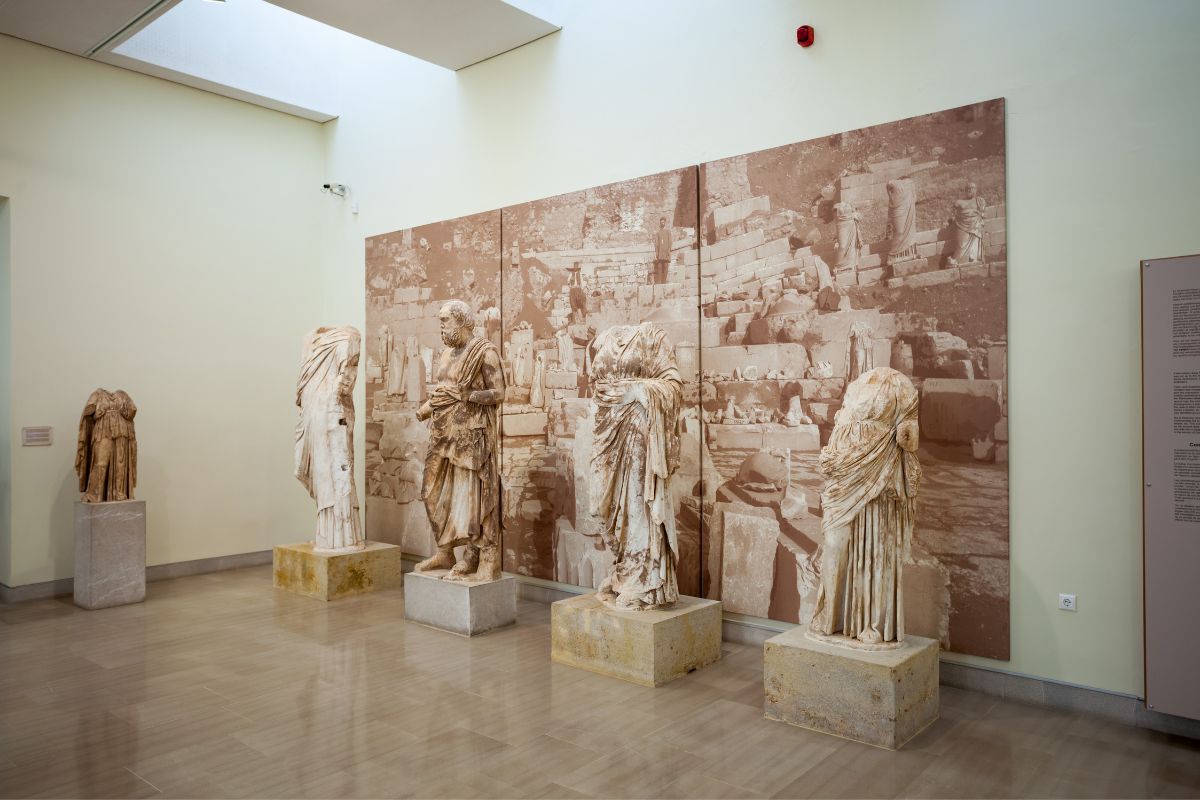
Delphi’s Archaeological Museum
Delphi’s Archaeological Museum, a treasure trove of ancient artifacts, offers insight into the rich history of the region. Housing significant relics like the Charioteer of Delphi, the museum provides a glimpse into the religious and cultural practices of the ancient Greeks.
Highlights and Must-See Exhibits
Delphi’s Archaeological Museum is a treasure trove of ancient artifacts, showcasing the rich history of the region. Among the must-see exhibits is the famous Charioteer, a bronze statue symbolizing the victory at the Pythian Games. The Sphinx of Naxos, intricately carved and steeped in mystery, is another highlight, captivating visitors with its enigmatic charm. Don’t miss the robust collections of pottery, jewelry, and sculptures that offer a glimpse into daily life in ancient Greece.
Understanding Delphi Through Its Artefacts
The artifacts displayed in the Archaeological Museum of Delphi provide a deeper understanding of the historical significance of Delphi and its role in ancient Greece. Each artifact tells a story and offers a glimpse into the lives of the ancient Greeks. The statues and reliefs showcase the artistic skill and craftsmanship of ancient Greek sculptors. They depict gods, goddesses, and mythological creatures, reflecting the religious beliefs and practices of the ancient Greeks.
The pottery and other everyday objects give insight into the daily life and activities of the ancient Greeks. They provide a window into the economy, trade, and social customs of the time. By studying these artifacts, historians and archaeologists have pieced together the puzzle of Delphi’s past, revealing its importance as a religious, cultural, and political center in ancient Greece. The artifacts offer a tangible connection to the people who lived in Delphi thousands of years ago, allowing us to better understand their world and their contributions to history.
Embark on a journey through time and myth with an Athens to Delphi day trip. Discover the profound history of the Oracle of Delphi and explore the wonders of this ancient site, including the Temple of Apollo and the archaeological museum. Plan your visit wisely, considering the best time to go and transportation options from Athens. Dive into the heart of Delphi, immersing yourself in its rich past at each archaeological site. Indulge in local cuisine to complete your experience. Delve into the magic of Delphi, where history and legend intertwine seamlessly, creating an incredible adventure.
Feeling Ready?
From our blog
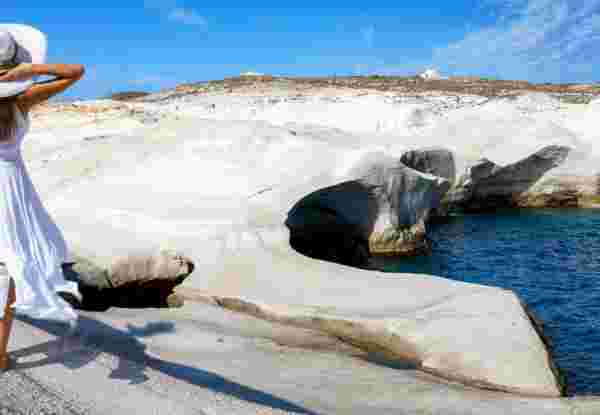
Romantic things to do in Greece: A couple’s guide

Weather in Greece in November

Weather in Greece in October: Your Ultimate Guide

Best Greek Island for teenage families to explore this summer

What to See in Greece: Ultimate Travel Guide

The Ultimate Guide to Greece Family Vacation

Visiting Greece in December: Complete Travel Guide

Best Resorts in Greece for Families: Your Ultimate 2024 Guide
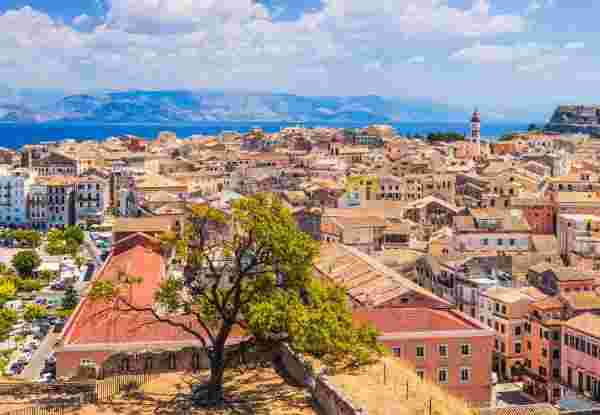
Weather in Greece in September: Ultimate Travel Guide
